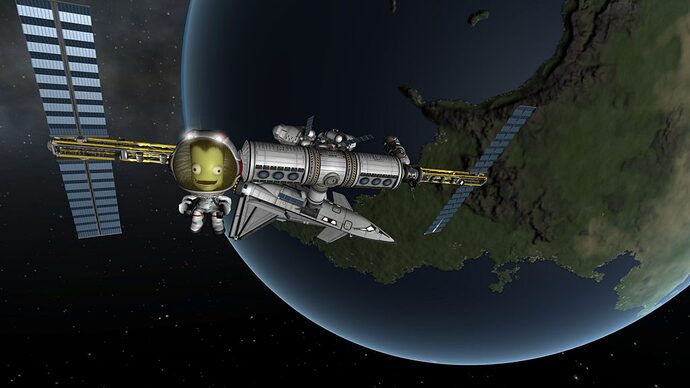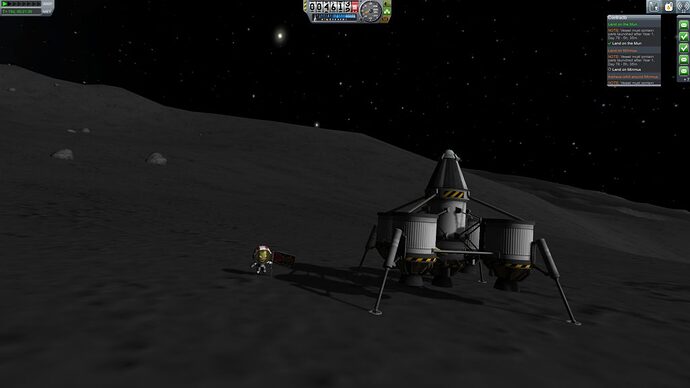Originally published at: https://statelyplay.com/2019/01/21/better-stately-than-never-how-many-kerbals-must-die-to-appease-my-bloodlust-all-the-kerbals/
One of my most endearing traits [right above obnoxious, yet not entirely unwarranted, levels of self-loathing and below crippling social anxiety. Just in case you’re keeping score -ed.] is the ability to instantly give up when the going gets tough. This goes for everything, but let’s put it into a gaming perspective. Factorio, Europa Universalis, RimWorld, and Kerbal Space Program. What do all these titles have in common? Steep learning curves. How do I adjust? I simply stop playing them.
I’ll get back to them, eventually. Usually. Factorio, for instance, has become, quite possibly, my favorite video game of all time. I’m slowly, but surely, getting my head around the interpersonal hooha in RimWorld. EU still eludes me, but I have started to get my Paradox feet wet with some Hearts of Iron IV. Oh, and I’ve really started digging into Kerbal Space Program the past couple weeks. Why did I wait so long?
For those who don’t know about KSP, it’s a space program simulation that feels about as realistic as any sim out there. You build rockets and space planes, launch them, perform SCIENCE! and, hopefully, return your Kerbalnauts safely to the surface of their homeworld.
[Kerbals, if you don’t know, are tiny green-skinned creatures that are way too eager to place themselves atop a stack of solid rocket fuel boosters]
The game has a sandbox mode in which everything is unlocked, letting you get your Wehrner von Braun dreams up in the air ASAP. The more fun mode, however, is Career. Here you begin with little more than a capsule and some rocket fuel with the goal of researching more goodies and building your space program into a science-gathering juggernaut.
He’s so cute. I’ll wait to tell him that I have no idea how to get him back into the ship.There are contracts you can sign to bring in much needed cash as well as direct your research in certain directions. You can hire and train new Kerbalnauts. You can upgrade all your buildings, opening up new options for space exploration. There’s not a lot in KSP that you can’t do, actually.
You’ll begin by launching simple rockets to see if you can keep your pilot alive, but will quickly advance to putting a ship in orbit, landing on the moon, building space stations, and exploring the rest of the solar system. Truly, there’s very little your Kerbals aren’t willing to try.
I have yet to land on the Mun. Thank goodness for developer screenshots.All of this wouldn’t work if the science behind it all wasn’t incredibly tight. If you’re mod-free, plan on grabbing a pencil and doing some figurin’ to work out Thrust-to-Weight ratios and Delta-V numbers. Anything is off a bit, and you’ll have the pleasure of watching your rocket tumble through the atmosphere instead of rising majestically through the clouds. Get ready to immerse yourself in terminology like “prograde”, “retrograde”, “anti-radial”, and “roll angle”.
It’s like Gravity if I had seen Gravity.I know that KSP has been out for a long time (it came out of beta in 2015), but I’m just finally getting up the nerve to actually work through it and get somewhere and, as usually happens, I’m kicking myself for not sticking to it way back then. I’m having a blast with it, building and testing until the wee hours of the morning, only to do one more launch to correct the failures of the last.
If you haven’t given KSP a try and don’t mind having to wrap your brain around some real world concepts to make things work, I can’t recommend it enough. If, however, you don’t like scads of minutiae, math, or the screams of Kerbals just realizing their capsule lacks a heat shield, you may want to look elsewhere.
- Kerbal Space Program for PC/Mac/Linux via Steam, $40
- Kerbal Space Program for PC/Mac/Linux via GoG, $40
- Kerbal Space Program for Playstation, $40
- Kerbal Space Program for Xbox, $40




 )
)